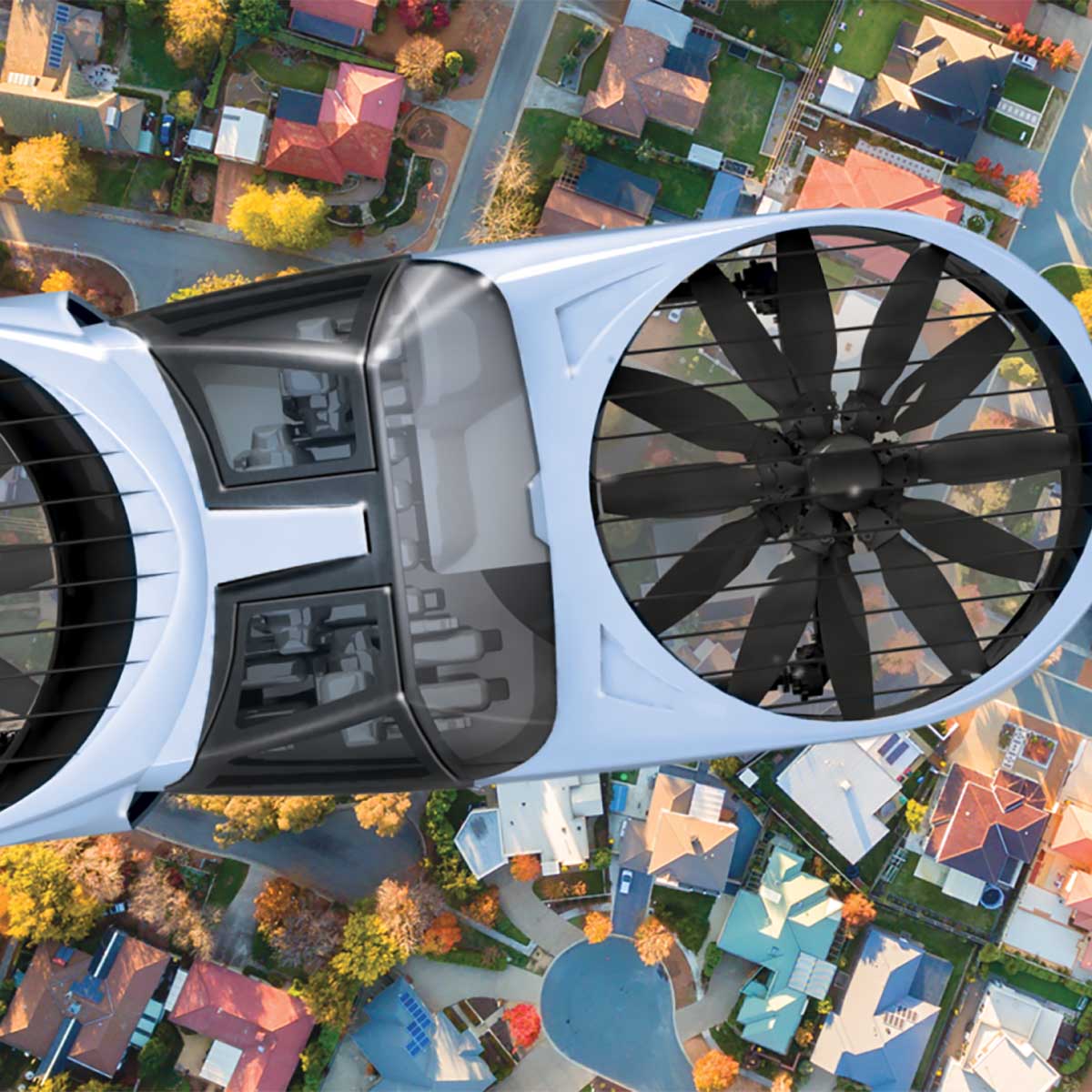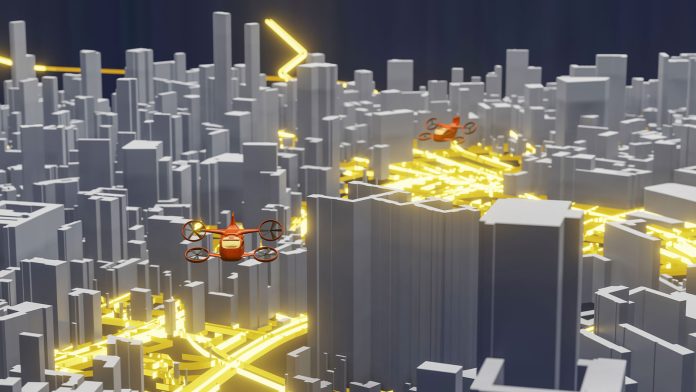Everything about the technology breakthroughs of driverless cars has become a thorny debate. When will they hit the roads? Are they viable? So-called “flying cars” are often considered part of that category – a yet to be fulfilled promise. However, UAMs, or urban air mobility vehicles, could become part of the new urban mobility before their ground-based self-driving counterparts. This article explains why and some of the leading technologies that are involved.
What is urban air mobility?
Urban Air Mobility is the term used to describe the new paradigm for air transport of vehicles and goods in our cities. The European Union’s Aviation Safety Agency estimates that it will become a reality within three to five years. That is, by the middle of this decade.
This does not mean that we will witness swarms of flying vehicles overnight. However, they will start to be used to solve some of the mobility challenges in cities – pollution, traffic congestion, accidents, and others.
The vehicles most likely to play a leading role in urban air mobility are eVTOLs, i.e., electric vertical take-off and landing vehicles. As this is the convergence of cars and aircraft, large aviation companies such as Boeing and Airbus and car manufacturers are currently developing commercial models.
Do you like what you see? Download the PDF here
What will flying cars in cities look like?
Futuristic visions are useless if they do not respond to real problems. The new generation of flying vehicles for cities or eVTOLs will be sustainable, user-centric, and self-piloted or equipped with simple controls.
Currently, flying a helicopter or airplane requires complex certifications beyond the average citizen’s reach. eVTOLs will seek to democratize flight with electronic control technologies such as fly-by-wire systems to simplify their operation.
Autonomous eVTOLs will likely appear sooner than self-driving cars since there are fewer obstacles in the air, such as pedestrians, traffic signs, etc. Besides solving the physical challenges of aerial navigation, the critical issue will be the existence of communication protocols between vehicles that allow traffic control and collision avoidance. In other words, an ecosystem that prevents a Wild West in the skies.
Urban aerial mobility vehicles, popularly known as “flying cars,” will offer the following characteristics:
- 100% electric
- Vertical take-off capability
- Fly-by-wire control systems
- A high degree of autonomy and safety
Main eVTOL models
As noted, the leading aircraft and car manufacturers are already at work and, in the coming years, we will see their proposals. There are dozens of companies developing their vehicles. In some cases, these are prototypes that have barely passed the computer graphics stage, while others are much more advanced. Here are some of the most relevant ones:
- Airbus: At the end of 2021, Airbus announced its flying cab under the name of CityAirbus. It is a vehicle with rotors and a V-tail capable of reaching seventy-five per hour with a range of fifty miles. After tests with demonstration models, the first flight of its prototype is expected in 2023.
- Joby: This is a startup that has teamed up with Uber to offer a new ride-sharing service, also electric, although with more ambitious specifications than those of Airbus. Its vehicle has been ten years in development and could reach one hundred and fifty-five miles per hour.
- Eve: This company, with a valuation of $2.4 billion, is one of the most prominent in this new sector. In addition to developing an eVTOL with advanced features similar to Joby’s, its goal is to create an ecosystem that includes communications and logistics elements. To this end, it is signing agreements with numerous partners.

eVTOL applications
Urban air mobility is likely to move away from the current vehicle ownership model and have more to do with car sharing, which is already being implemented at ground level in large cities. For the time being, the following applications are on the horizon:
- Aerotaxis: With a capacity of four to six passengers, some of the first eVTOLs we will see will likely belong to passenger transport companies.
- Transportation and delivery of goods: With initiatives such as Amazon’s or Volocopter’s, this application could streamline parcel deliveries in cities.
- Medical assistance: They could speed up the arrival of medical personnel and equipment to accident sites more efficiently than with a conventional helicopter and in urban areas.
- Humanitarian assistance: These vehicles could also save human lives in war or natural disaster scenarios.
- Firefighting: They could help control fires and evacuate buildings in cities.
Urban aerial mobility could be one of the critical elements of smart cities, but it still faces many challenges, especially in terms of autonomy and safety. By mid-decade, we will know whether we will have to continue to wait for it to materialize or whether its time has finally arrived.
Sources




